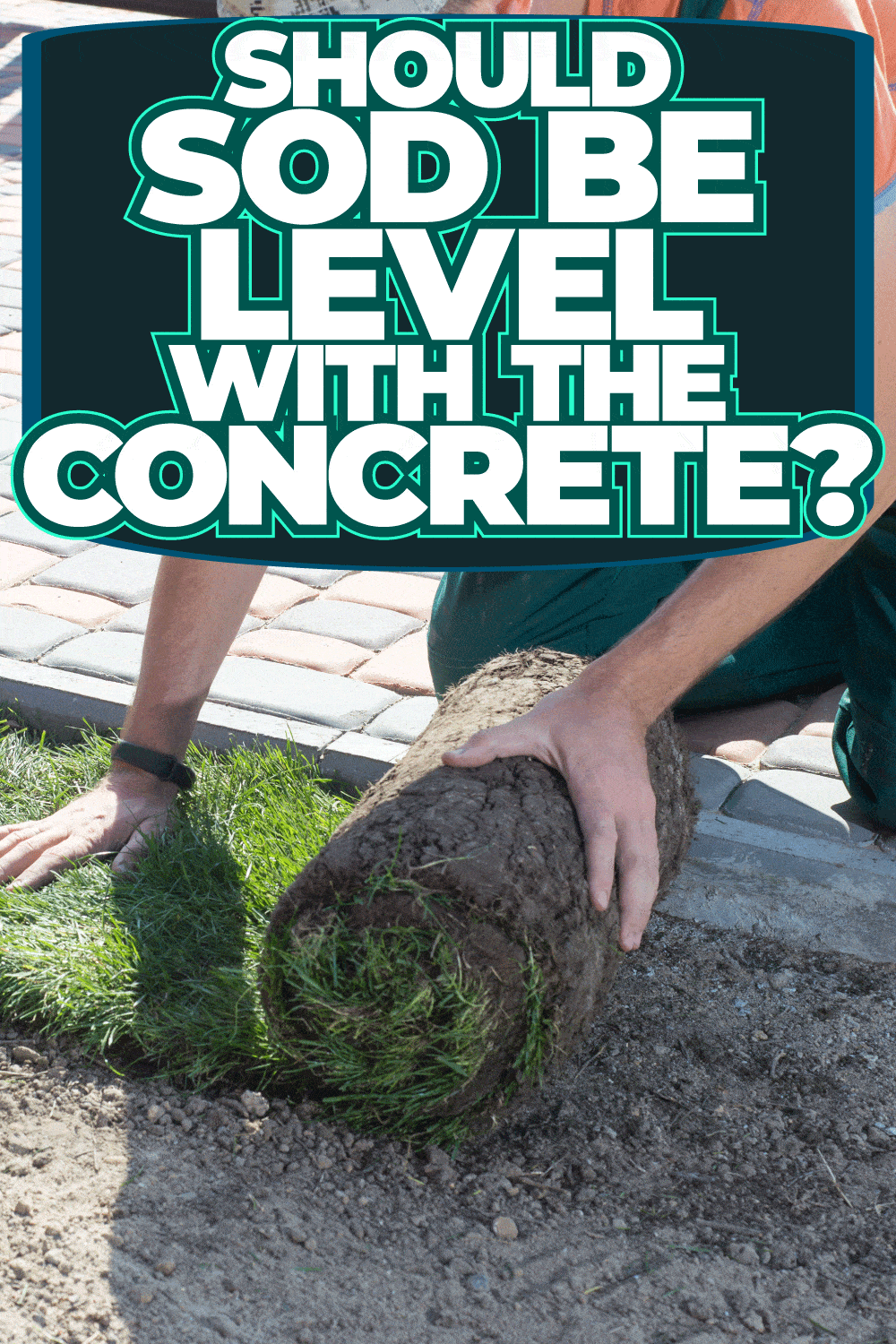If you're looking for information about the proper sod height in relation to your concrete landscape, you've landed on the right page. We've researched this concern, and here's what we found out.
Sod shouldn't be level with concrete. Lay the sod right next to the concrete but see that it is lowered by 0.5" to 1.5" to prevent water and dirt from spilling over to the concrete pavers.
Keep reading to learn more about this and get more tips on laying sod next to concrete. We'll also answer if you can lay sod on top of concrete. With that said, let's get started!
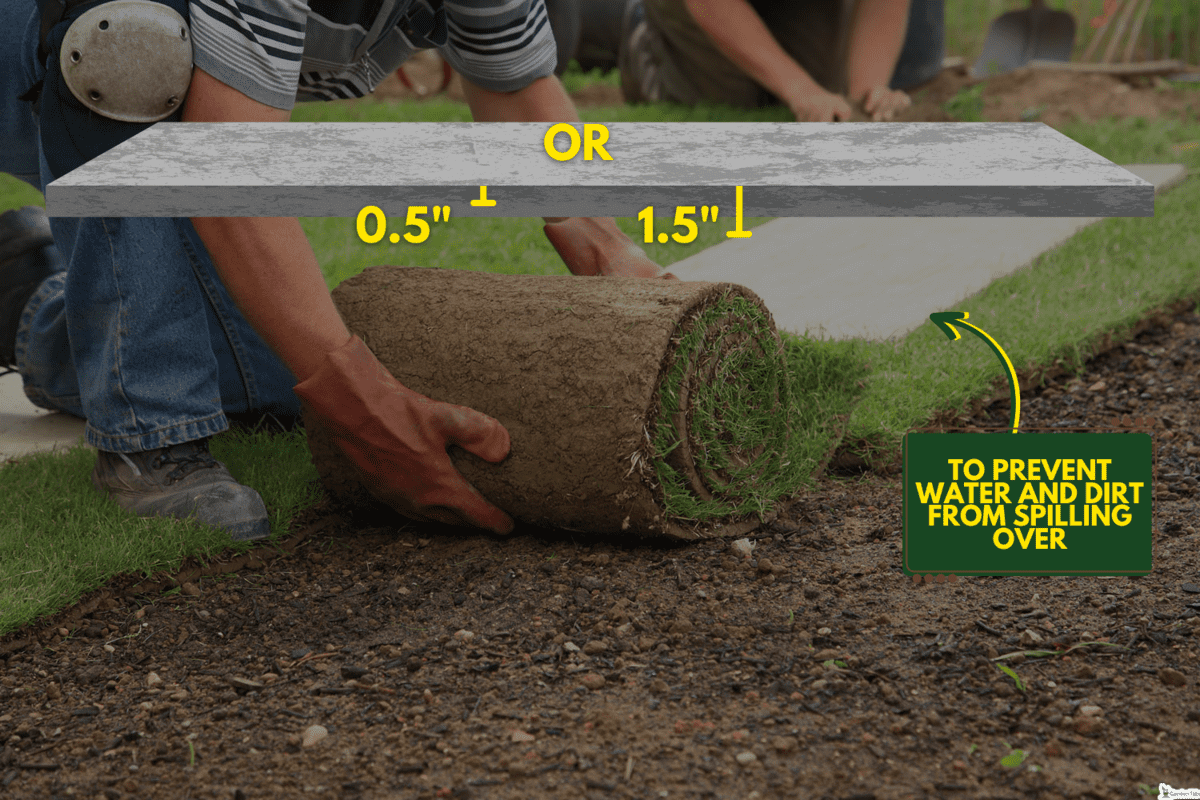
How High Should Sod Be Over Concrete?
It is common to find concrete side by side with grass on many lawns. Their combination is pleasing to the eye. The grass softens the lawn's overall look, while the concrete adds functionality to the space.
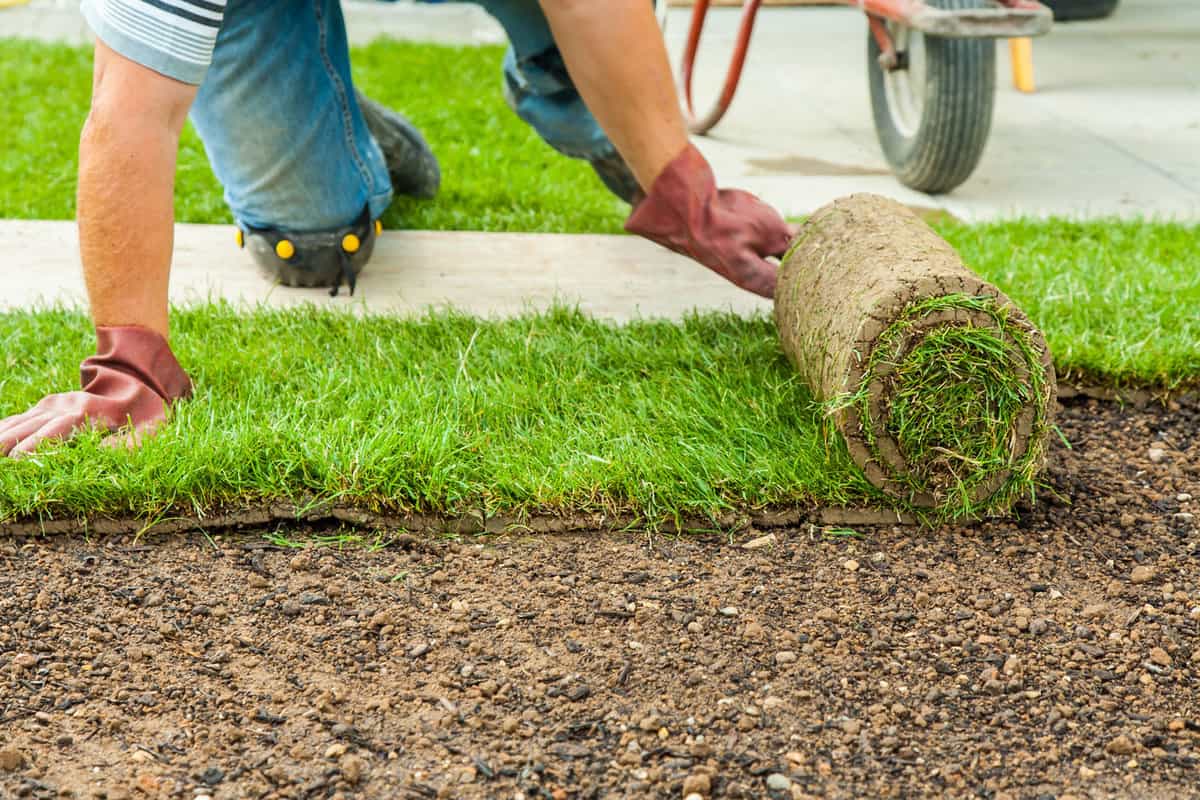
It can be used as a walkway, driveway, or patio.
But to optimize their form and function, special consideration is given to their heights.
Some homeowners would think the sod should be higher or at least level with the concrete. However, this isn't recommended.
If this is the case, there will always be puddles of water on the concrete surface. This can be a safety hazard as the pavement can become slippery when wet.
It can also lead to flooding and water damage to the concrete. Weeds and other particles from the grass will also easily find their way onto the pavement, which means more maintenance work for you.
Sod should sit lower on the ground. There should be a 0.5" to 1.5" difference in height between the sod and concrete.
Maintaining this height difference will lead to more efficient water use - the grass can soak in it, and the excess will flow away from the concrete spaces. You will have puddle-free concrete pavements that are easier to clean and safer to walk or drive on.
How To Lay Sod Next To Concrete
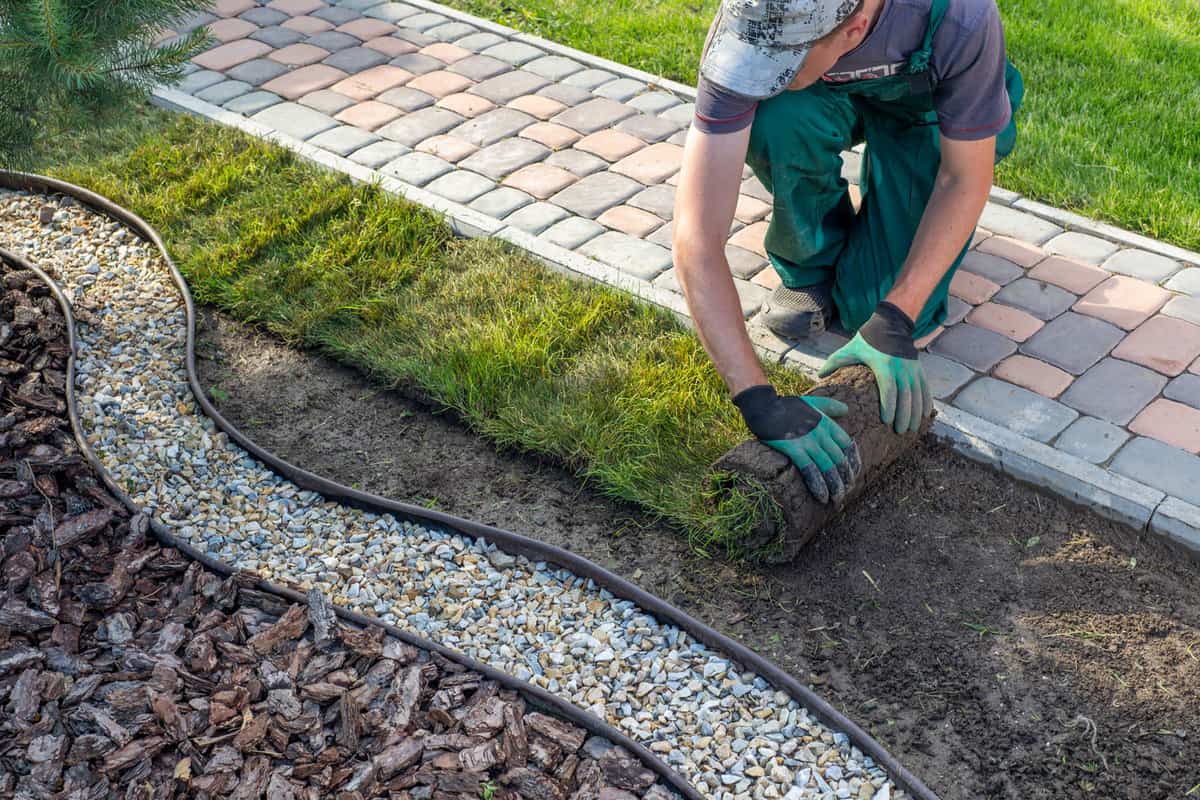
Now that you know there should be a height difference between sod and concrete. Let's proceed to how you can achieve this when you lay new sod on your lawn.
Here are the steps to guide you from soil preparation to sod installation and what to do after.
Start Fresh
Remove remaining grass, weeds, and unwanted plants from the soil.
Experts recommend you rent a sod cutter to help make this task easier. It'll take off at least 3/4" of topsoil along with other vegetation that has taken root in the lawn.
If there are no visible grasses or plants, you can apply a non-selective weed and grass killer on the lawn to ensure that there won't be any unwanted plants.

Check out this weed and grass killer on Amazon.
It is crucial to ensure that all weeds and old grass are eliminated before you lay new sod to have a healthy lawn.
Otherwise, all your effort will go to waste as these plants will quickly take over your lawn and compete with the nutrients in the soil, killing your newly planted sod.
Manage The Depth
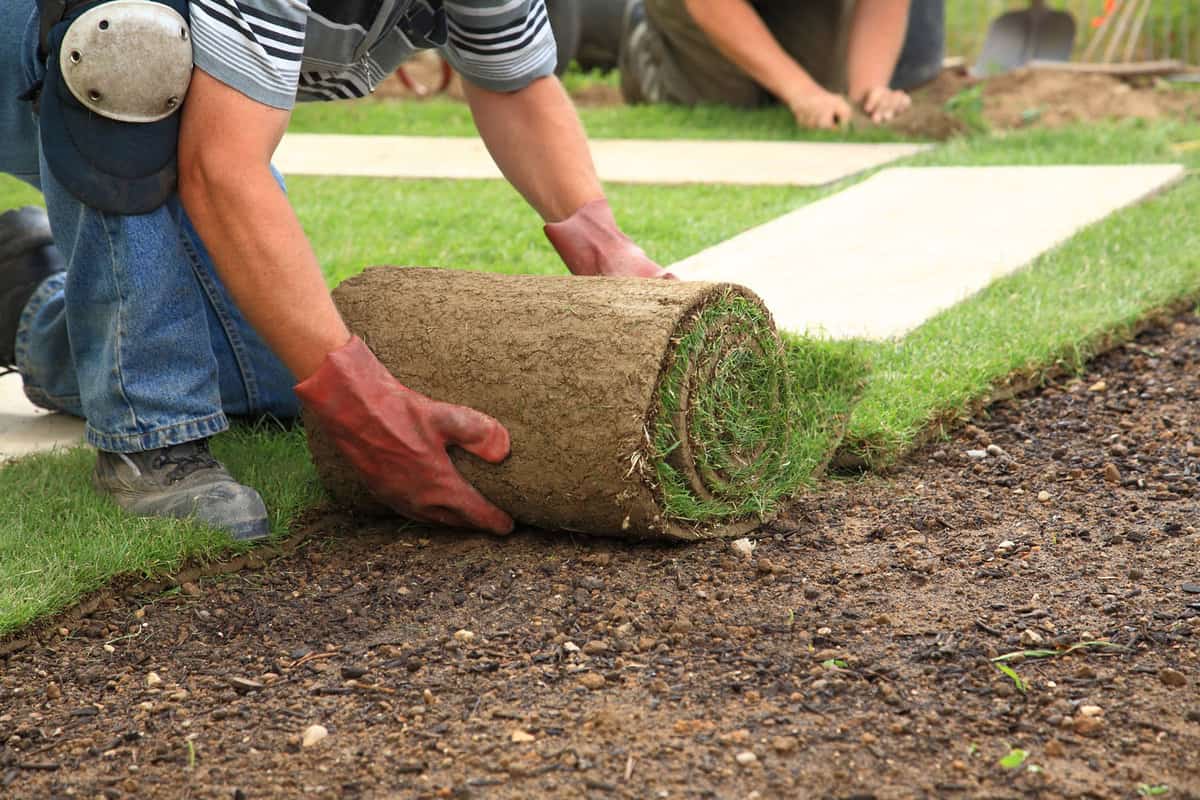
Experts are particular about the height of your soil and sod next to concrete. If your sod is higher than the concrete, the water from this area will drain into the concrete pavers.
This will cause water to accumulate on this portion and lead to flooding and concrete damage.
After removing old grass and weeds, the soil should be 1" to 1.5" lower than concrete. This way, when you lay your new sod, it'll still be slightly lower than concrete and allow proper water drainage.
If there are portions wherein the topsoil is less than 1" lower from the paved ground, you can scoop the soil and redistribute it to other areas that are much lower.
It also isn't good for the topsoil to sit so low on the ground. If you find that its depth is more than 1.5", you can add more topsoil onto it. The optimal range is within 1" to 1.5" only. Anything below or higher than this height should be fixed.
A sod cutter is recommended because you can adjust the settings to achieve the desired depth. This is more of a concern for those who opted to take the weed-killer route to get rid of old vegetation.
At this point, removing large rocks and debris you can find in the soil is also essential. These will hinder you from having an even lawn and can cause issues with air pockets later on.
Once you're done, compact the soil with the help of a cement roller.
Mind The Grade
Your lawn isn't supposed to be level. Otherwise, water won't be able to flow towards the proper drainage. It will cause flooding whenever you water your lawn, or it rains.
Before laying new sod, take this opportunity to check the grade of your lawn.
The ground should have a gentle slope away from your concrete spaces. Experts recommend maintaining a slope of at least 2" to 3" for every 10 ft of ground to promote good water drainage.
This is enough depth so the grass can still soak in water for nourishment, and excess water will trickle down from the pavement.
Sod's Height
When you lay the new sod on the soil, it should sit right next to the concrete. There shouldn't be any gap between the sod and the pavers.
This will help you achieve a clean and even look for your lawn. If there's a space between the concrete pavers and sod, it will be challenging to fill the gap later.
At the same time, be conscious of the sod's height as it lays side by side with the concrete. There should be at least a 1 cm difference in their heights, with the concrete being higher than the sod.
If the sod is higher than the concrete, you need to remove it and excavate the soil to adjust its depth.
Sod Installation
The sod should be installed on the day that you get it. Otherwise, it'll die, and you'll just be wasting your effort and money. You must do the necessary soil preparations days before your scheduled sod installation.
You can also ask for help to finish laying the sod within the day, especially if you have a big area to cover.
A sod knife will help you achieve a defined look. Carefully trim the sod so that it'll follow the curve and the entire outline of the concrete spaces in your lawn.
Restrict access to the newly installed sod for about two weeks.
This will give it time to take root deep in the soil. With the help of starter fertilizer and a regular watering schedule, you will have a green and healthy lawn that you can be proud of.

Find this starter fertilizer on Amazon.
Can You Put Sod On Top Of The Concrete?
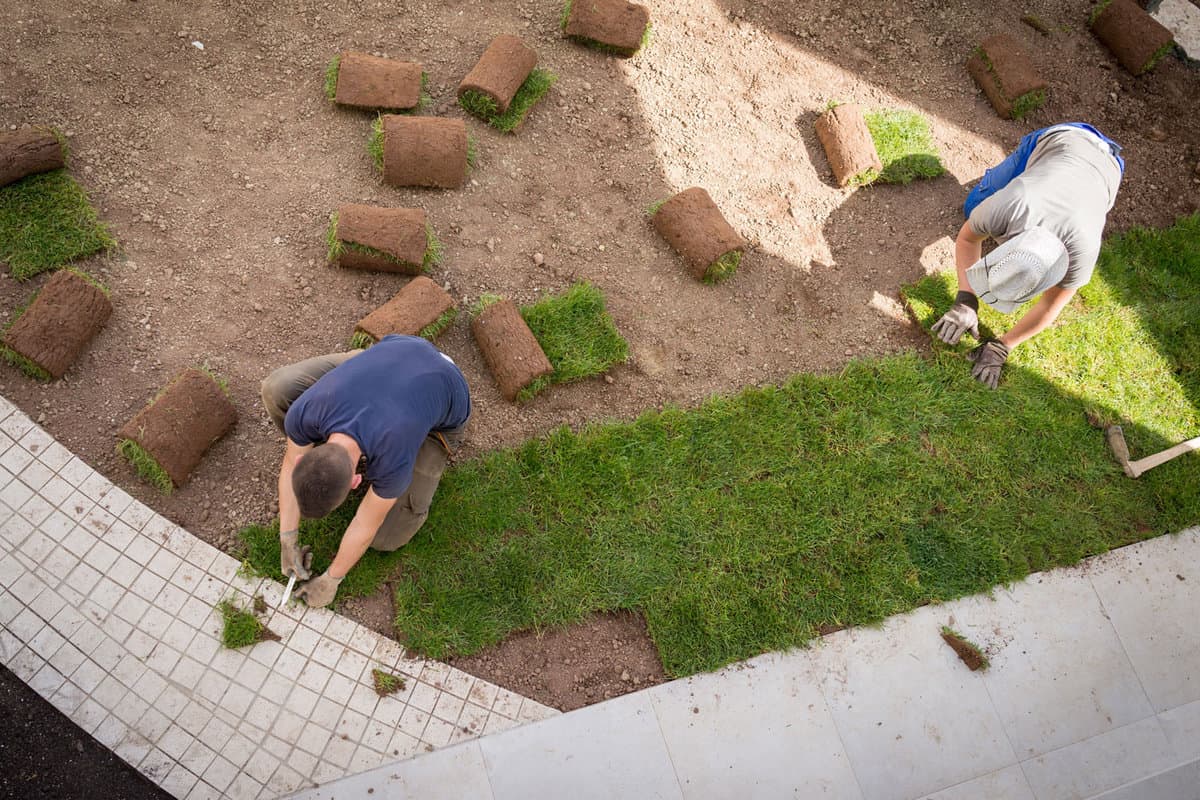
- First, you have to check if there's proper drainage. If there are none, you can make drainage grooves so the water won't be stuck on the concrete.
- Add around 6" of soil over the concrete pavement. You can also put organic materials at the bottom, such as wood chips, dried leaves, and straw. This way, the air can flow underneath, and when the bottom components decompose over time, they'll add to the soil's nutrients.
- Choose a resilient and low-maintenance type of grass seed to survive better under these conditions. Experts recommend Creeping Red Fescue.
- Distribute the seeds evenly to avoid competition when it comes to nutrition.
- Use starter fertilizer and follow the manufacturer's watering instructions.


Check out these grass seeds on Amazon.
It's not easy to grow grass over concrete, but with your patience and effort, you can cover your concrete space with green turf.
Our Final Thoughts
Ensure the sod in your lawn is lower than your concrete pavements to maximize water for the grass, promote good water drainage, and take care of your concrete. In the end, you'll reap the benefit of having a green and healthy lawn.
Made it to the end? Check out these related articles below!
How Long After Tilling Can You Lay Sod Or Plant Grass?
How Much Topsoil Do I Need For Sod?
